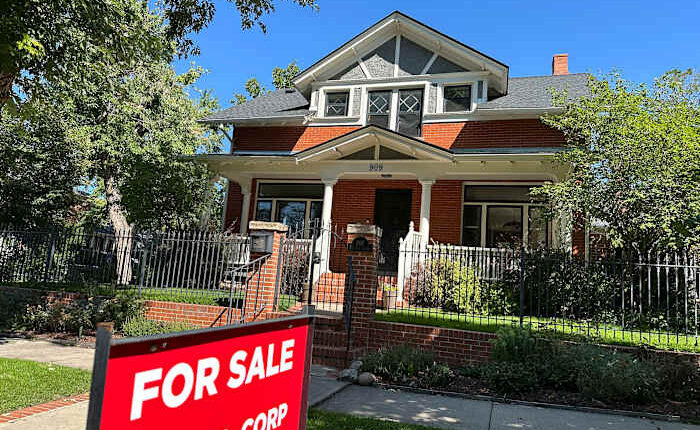
The average rate for a 30-year mortgage in the United States has decreased for the fifth consecutive week to reach its lowest point since late December. This drop is good news for individuals looking to buy a home, particularly during the peak season for home sales.
The average rate fell to 6.85% from 6.87% last week, mortgage buyer Freddie Mac said Thursday. A year ago, it averaged 6.9%.
Additionally, the interest rates on 15-year fixed-rate mortgages, which are popular among homeowners looking to refinance for a lower rate, have also seen a decline this week. The average rate dropped from 6.09% to 6.04%. For comparison, a year ago, the average rate was 6.29%, according to Freddie Mac.
The combination of increasing home prices and higher mortgage rates has resulted in added monthly costs for borrowers, deterring many potential homebuyers from entering the market. This situation is especially challenging for first-time buyers who lack the equity from an existing home to use towards their new home purchase.
Sales of previously occupied U.S. homes fell last year to their lowest level in nearly 30 years, extending a national home sales slump that began in 2022 as mortgage rates began to climb from their pandemic-era lows.
The average rate on a 30-year mortgage is now at its lowest level since Dec. 26, when it was also 6.85%. It briefly fell to a 2-year low last September, but has been mostly hovering around 7% this year.
“This stability continues to bode well for potential buyers and sellers as we approach the spring homebuying season,” said Sam Khater, Freddie Mac’s chief economist.
The inventory of U.S. homes on the market climbed last month to its highest level since June 2020, according to data from Redfin. But mortgage rates and prices remain an unaffordable combination for many would-be homebuyers.
Despite the recent easing in mortgage rates, home loan applications fell 5.5% last week from the previous week to the lowest level since the start of the year, according to the Mortgage Bankers Association.
“Purchase activity was higher than year-ago levels, but many prospective homebuyers are waiting for supply and affordability conditions to improve meaningfully before jumping into the market,” said Bob Broeksmit, the MBA’s CEO.
Mortgage rates are influenced by several factors, including how the bond market reacts to the Federal Reserve’s interest rate policy decisions.
The latest pullback in rates echoes a decline in the 10-year Treasury yield, which lenders use as a guide for pricing home loans.
The yield was at 4.79% just a few weeks ago, reflecting fears that inflation may remain stubbornly higher amid a solid U.S. economy and the potential impact of tariffs and other policies proposed by the Trump administration.
The 10-year yield was at 4.5% in midday trading Thursday, following a report showing that more U.S. workers applied for unemployment benefits last week than economists expected.
Copyright 2025 The Associated Press. All rights reserved. This material may not be published, broadcast, rewritten or redistributed without permission.

















